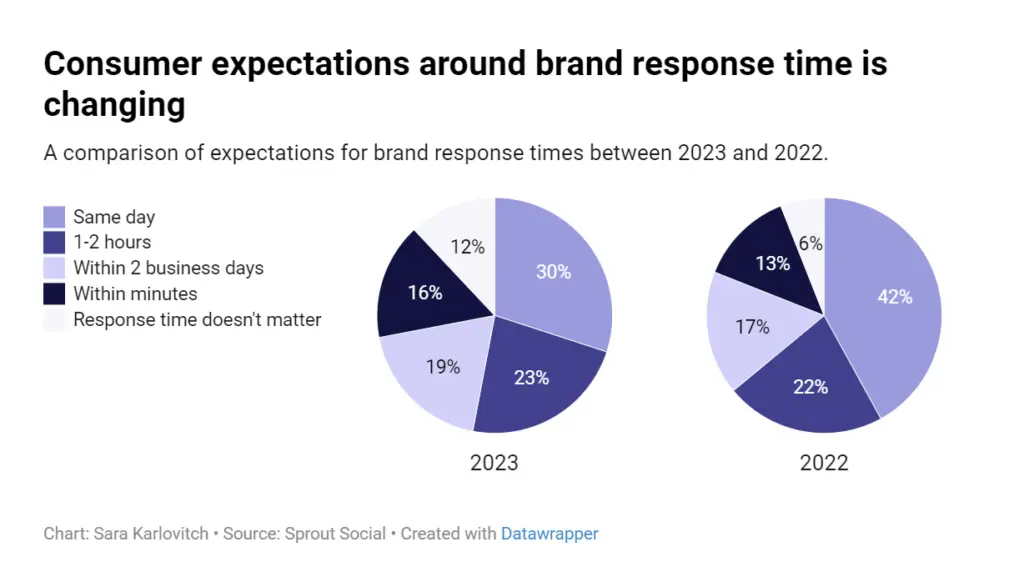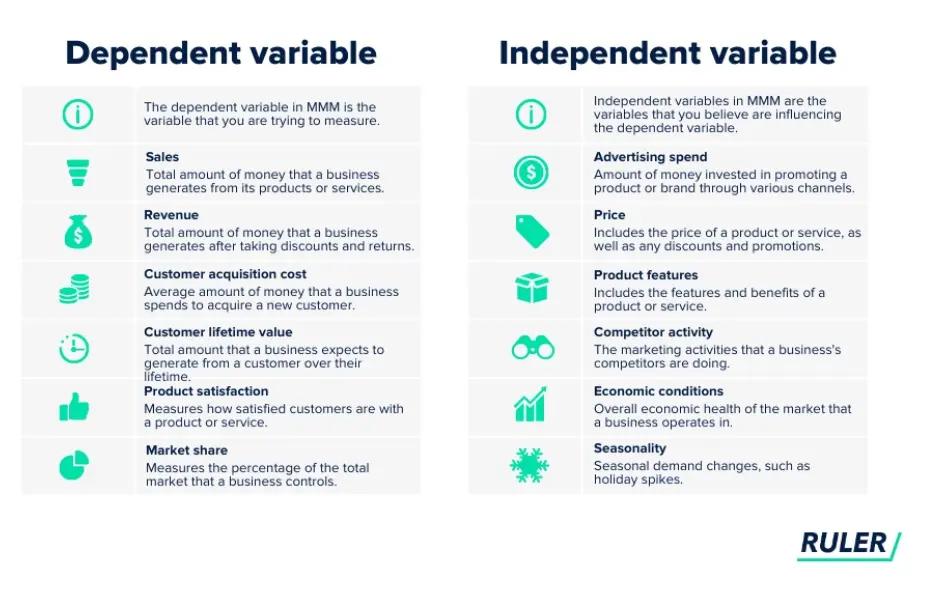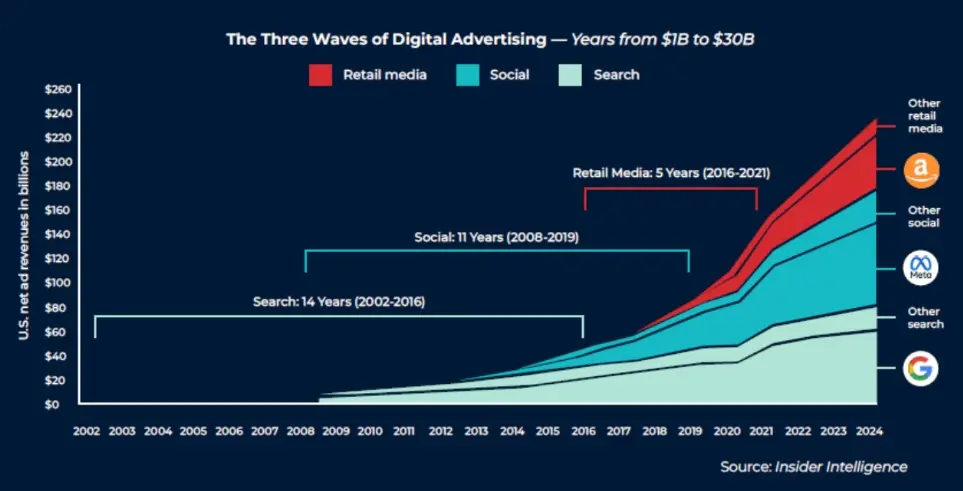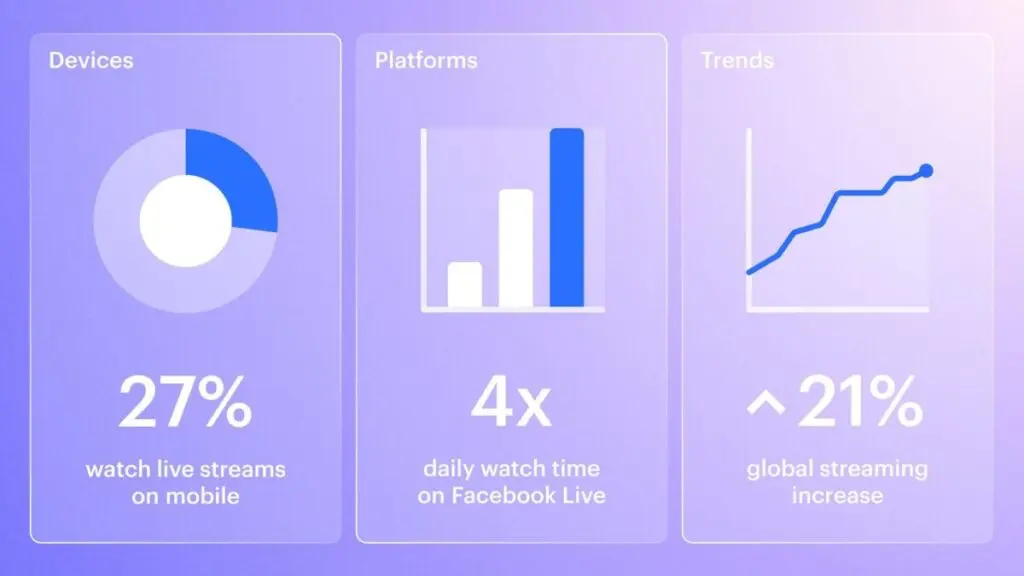Creative agencies have an indisputable role as change agents amid evolving consumer behavior and client expectations. Agencies stretch their creativity to the limit so brands can engage with consumers in memorable and meaningful ways. Moreover, more marketers are dedicating their talents to reaching more than ROI targets, seeking to build a more sustainable and ethical future.
However, as the digital landscape changes at an escalated pace, how can creative agencies stay relevant and profitable in the long haul? To continue providing clients with expertise, perspective, clarity, and scalability, agencies must consider how they can ride on the following trends as they forge toward 2024:
8 Trends that Will Reshape Client Demands from Creative Agencies in 2024:
Agility
You must rapidly test strategies and new tools to determine how to drive the most value for your clients in a crowded playing field. Look into these three areas to keep your agency agile:
Speed to market
You must be flexible and adaptable on many fronts in 2024—from client communication to tech stacks—as brands rely on you to help them achieve optimal speed to market (or time to market). This "first mover" strategy of quickly launching a new product is most helpful to startups and new businesses in establishing themselves among competitors. Products can go viral as small companies jump on hot trends ahead of bigger brands. With a product's early release, agents can help businesses tweak their offers in response to customer preferences and demand. Delivering quality products on schedule is also necessary for creating positive customer experiences, leading to higher sales and a loyal and growing client base. In addition, 48% of global consumers want faster delivery, with patience shortened to 2.15 days in 2023 from 2.36 days in 2022.
Urgency in communication
Make your agency or your account managers accessible through several communication channels—phone, online chat, and email—to meet the growing demand for immediate communications. While only 30% of consumers expect a same-day response in 2023, down from 42% in 2022, 16% expect a response "within minutes" in 2023, up from the previous year's 13%.

Source: marketingdive.com
Tech stack consolidation
Agencies will adopt new tools for optimized workflows, especially to enhance collaboration among remote team members. At the same time, software from various vendors, which you can easily combine, deploy, recombine, replace, and scale—also referred to as “composable architecture”—will be popular.
eCommerce businesses have already begun embracing this structure, using various but compatible systems for inventory tracking, checkout, and user account management. Components can integrate and share data (typically through APIs) and undergo an upgrade without putting the whole system offline. Marketing teams must continue to invest in growing their team's skills in multi-disciplinary ways to stay innovative and technically sophisticated.
Cultural alignment
Agencies must be aware of their clients and their target market's advocacies because consumers will increasingly patronize brands that share their stand on issues they're concerned about—whether it's environmental sustainability, mental health, or inclusivity. In a Kantar survey, 80% of respondents said they “make an effort” to buy from businesses, which support causes they believe in. Meanwhile, online retail tech service provider ESW’s latest shopper expectation report showed that environmentalism is a purchasing factor among 8 in 10 shoppers.
In the UK, the Advertising Association has already become more forthright in its climate change position by launching the Ad Net Zero initiative, which seeks to reduce carbon use in ad production, publication, and distribution. Amazon, Google, Meta, and the World Federation of Advertisers are already among its global group members.
Conducting surveys and market research will help you understand your ideal buyers better and produce sincere campaigns that are responsive to the public's sensitivities. However, social listening and community management can achieve the same results while being less intrusive.
Another way to be in tune with value-based or mindful consumers is to discover the content creators they're following. It’s therefore unsurprising that influencer marketing specialists are among the jobs that the industry expects to be in high demand in 2024. They are experts in matching businesses with creators whose personal brand aligns with the former's message. As much as 64% of brands plan to expand their creator collaborations in 2024. Meanwhile, influencer marketing budgets may hit $7.14 billion among US-based companies alone.

Source: partnerships.impact.com
AI
A Teamwork.com report showed that 50% of agency heads consider AI as "the future" and essential to innovating and streamlining work. Only 8% and 7% of respondents see it as a "passing trend" and "a threat." Forrester is optimistic that generative AI won't replace agency roles and will automate only 7.5% of current jobs by the end of 2030. Instead, AI trainers will arise as the new "hottest job" in marketing in the next few years, according to marketing thought leader Jon Bond. He told the Ad Exchanger that individuals in this role will be skilled at feeding specific prompts to AI agency tools and improving its performance in shared tasks and projects.
Self-expression & Authenticty
Global strategy head at brand design agency JDO Ed Silk told Creative Boom it's time to embrace AI as your "crazy, wacky, and mad" co-worker who shamelessly challenges you to explore, experiment, and generate both the wonderful and the weird. Creative directors see 2024 as a year that redefines how people view and play with their creativity, developing technology-inspired brand assets with unique or futuristic designs. Agencies and brands will use AI to make products and campaigns more distinct through multi-sensory and immersive experiences.
Post-production convenience
Creative professionals can tap AI-run tools to save time in post-production work, from culling or sorting images into a smaller selection for editing or sending to clients to color correction and other image editing or enhancing tasks. AI can capably handle repetitive tasks, such as data entry and performance, so creative teams can innovate and execute fresh concepts. AI writers can also speed up marketing copy generation, producing written content that can kick-start the drafting process.
“Niche-ification” and personalization
Mediaocean chief marketing officer Aaron Goldman predicts the emergence of custom GPTs, telling Creative Pool that AI tools will have niche applications for business and personal use. AI will see an expanded role in providing brands with information about streamed content viewers, with content producers working more closely with streaming platforms for data partnerships.
Marketing mix modeling (M3)
As clients economize in 2024, you must help clients understand how your marketing strategy—and not coincidence—is directly responsible for their ROI growth. Marketing mix modeling allows you to achieve this as the technique quantifies the impact of various actions (on online and offline channels) and external factors (consumer demographics, industry competition, and macroeconomics) on sales. AI is essential in gathering data to show how each activity hits your client's KPIs and raises profitability. Results will also aid demand forecasting, budget planning, and pricing. Consultancies like Nielsen and software, such as Proof and Analytic Edge, provide M3 solutions.

Source: ruleranalytics.com
AI use guidelines
Clients will reportedly increase agency reviews by 10% amid fears of AI mismanagement. As a result, veteran marketers advise agencies to form "AI councils," which will study opportunities, identify potential risks, and ultimately set AI use guidelines. Your AI policies should clarify principles on when to use AI, the team training involved, and how to secure data for privacy law compliance and audience trust. If you need a template to help you write your guidelines, try the Responsible AI Manifesto by the Marketing AI Institute.
More retailers to offer ad spaces
Agencies will search for tech solutions that will give them access to consumer data when search engines abolish third-party cookies. Marketing executives anticipate these ad tech platforms will emerge from retailers themselves, being holders of their shoppers' first-party data. In this "third big wave of digital advertising," companies will sell ad space on online assets—home pages, category pages, product detail pages, and search result pages—so that marketers can reach in-market audiences at the point of sale.

Source: retailtouchpoints.com
Amazon Advertising led the charge in 2012, followed by the likes of Walmart Connect, Target’s Roundel, and Best Buy’s Retail Media+. eMarketer predicts that ad sales from such networks already in operation in the US will be over $59 billion by 2024.

Source: insiderintelligence.com
Meanwhile, agencies can activate campaigns so brands can communicate and deliver value for opt-in data capture. Loyalty programs offering special access to products and services, discounts, or exclusive experiences in exchange for shoppers' purchase information can build trust.
Streaming and CTV
Live streaming and on-demand streaming will continue to capture interest even if in-person events are in full gear. In the spirit of omnichannel marketing, hosting product launches, sales promos, behind-the-scenes exclusives, and other online activities will stay in the engagement mix of brands. Meanwhile, more movie and entertainment-related content providers will license their exclusive offers to streaming platforms.

Source: restream.io
Connected TV and free ad-supported streaming TV (FAST) will be other avenues that brands and agencies will explore. Experts believe 2024 will see longer CTV ads that consumers won't mind due to personalization and interactivity (buying from internet-connected TV)—plus, they help keep subscription rates affordable.

Source: insiderintelligence.com
Tactical brand activation methods
Agencies will help strengthen brand awareness, engagement, and loyalty in multi-faceted ways, depending on their clients' company size. Programmatic advertising, outdoor display, VR, AR, and "cinema marketing" are some options large businesses can explore beyond social media and influencer marketing to widen brand presence. Meanwhile, smaller companies can incorporate motion graphics and simple animation into their marketing content, being more cost-effective but strategic storytelling tools. Organizing micro-events centered on a location's top attraction would be a viable crowd-drawer for the target market of industries beyond tour and travel.
As Publicis Media Singapore managing director Elaine Poh puts it, campaigns must be interactive, especially if you're aiming to attract the younger generation. Marketers must find time to soak up culture—theater, architecture, music, and art—firsthand instead of using Google or Pinterest for new inspiration sources.
Uptick in collaborations
2024 will witness collaborations among related sectors and between brands and influencers with smaller-sized followings. Companies may work with non-competing brands with similar target markets for cross-brand campaigns. For instance, hotels, restaurants, and general merchandise retailers may form unique partnerships to cross-sell goods, such as furniture, tableware, or window covers. Another example is the team up of luxury lifestyle and fashion brands with the hospitality industry. Fendi and Dior have set up pop-up beach clubs in Spain's Puente Romano Beach Resort and Four Seasons Resort Bali, while some brands (Bentley and Tiffany) have suites named after them in renowned hotels (St. Regis NYC).
Meanwhile, businesses will lean toward longer-term influencer ties as more authentic stories can emerge from the extended use of a service or product. Moreover, brands will eye micro- and nano- influencers with smaller but highly engaged communities and a deeper understanding of local preferences.
Price management
Agencies can advise brands with lean budgets to maximize free PR tactics such as social media campaigns, networking events, pitching to news media, and public speaking opportunities. Businesses will also benefit hiring a fractional or part-time chief marketing officer, an experienced professional who will take the lead in developing your internal team's marketing processes and abilities in a temporary or long-term capacity, based on their budget.
Meanwhile, Kantar recommends that marketers consider three questions when setting prices for their or their client's offers as inflation will push consumers to favor smaller and more local brands, cheaper retailers, and private labels. You can set premium rates if you confidently answer "yes" to the following:
- Do your prices match the reality in the market?
- Do you have enough equity (high value and positive consumer perception) to justify your relative price?
- Do you have sufficient "extra equity"?
Agencies may ultimately have to recommend conducting a price elasticity study, which measures how consumers respond to price changes—particularly how it will impact demand for a company's product. Goods have an elastic price if the demand for them (or the quantity of items purchased) changes significantly in response to a change in price (for instance, demand drops by 10% after a 5% increase in price). Products typically have higher price elasticity when plenty of acceptable alternatives are available. Market research will help identify these substitute products and assess their pricing before you develop a strategy for your agency or client.
2024 Belongs to Marketers Who Embrace Perpetual Learning
With third-party cookies expected to cease in 2024 (or by the end of next year), planning for the New Year will have to include new targeting and measurement technologies. Teams must adapt, staying curious and open-minded to new processes, partnerships, and markets.
As agencies typically don't have a dedicated business development division, it's up to individual members to collectively take action to build trust and close more deals. By studying the 8 trends we discussed, we hope you'll be more confident to map out and simplify your client's roadmap to higher sales and profit.



